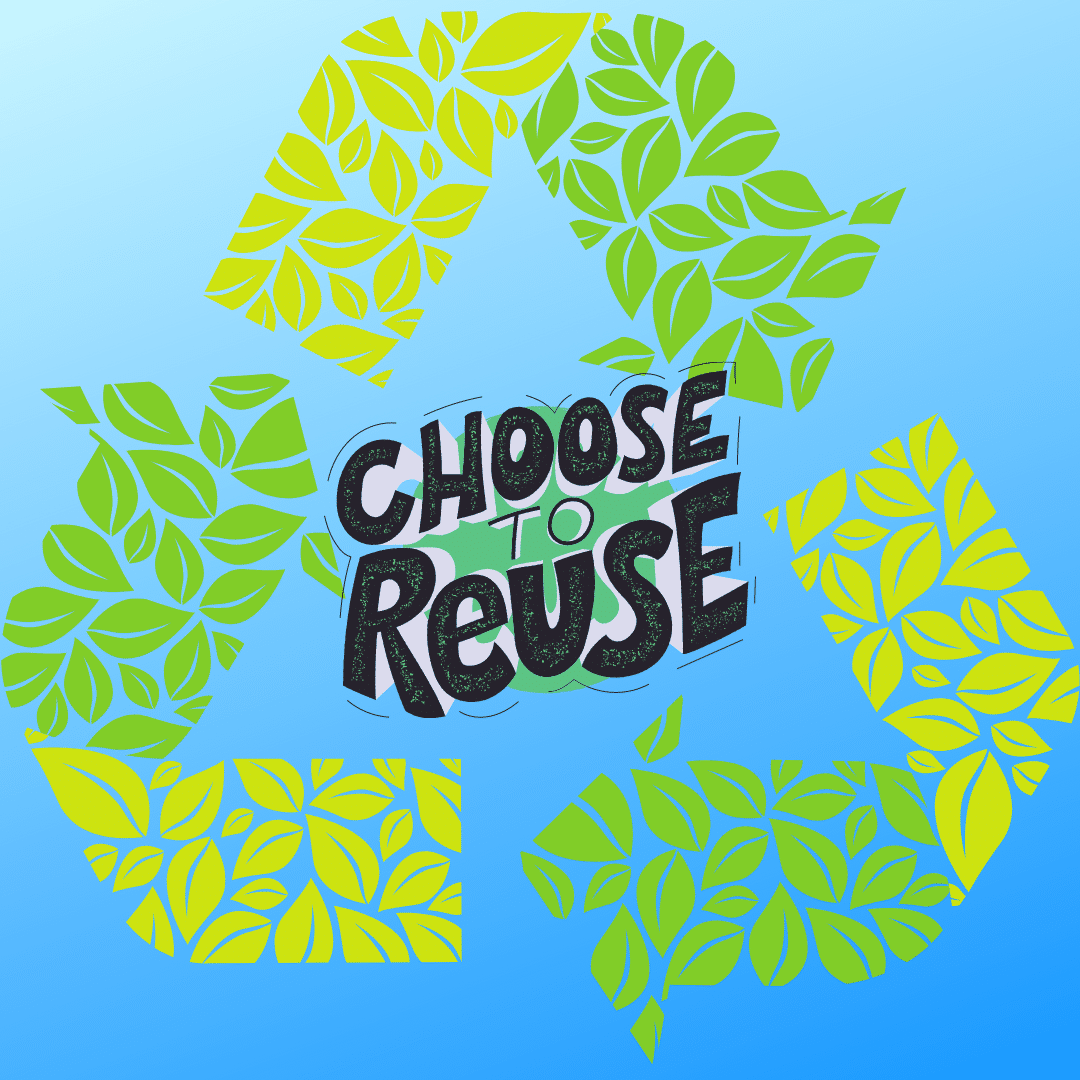
Reduce. Reuse. Recycle. Each aspect of this phrase is to encourage minimizing pollution and responsibly managing our waste. This is an anthem every environmentalist knows and supports. This blog post will focus on the “reuse” part of this phrase. We will review why it is so important to reuse as much as possible and how you can reuse items you never even thought of! Join us on a journey to reuse as a way to limit our consumption, landfill waste and pollution.
Why reuse?
Unfortunately, not all items that are produced can be recycled, or composted. Therefore, items that cannot be recycled, composted or items that were contaminated in material recovery facilities end up in landfills. You can read more about contamination in our blog posts No Contamination November and What is “Wish-Cycling?”. While landfills are a societal necessity, they still have significant impacts socially and environmentally.
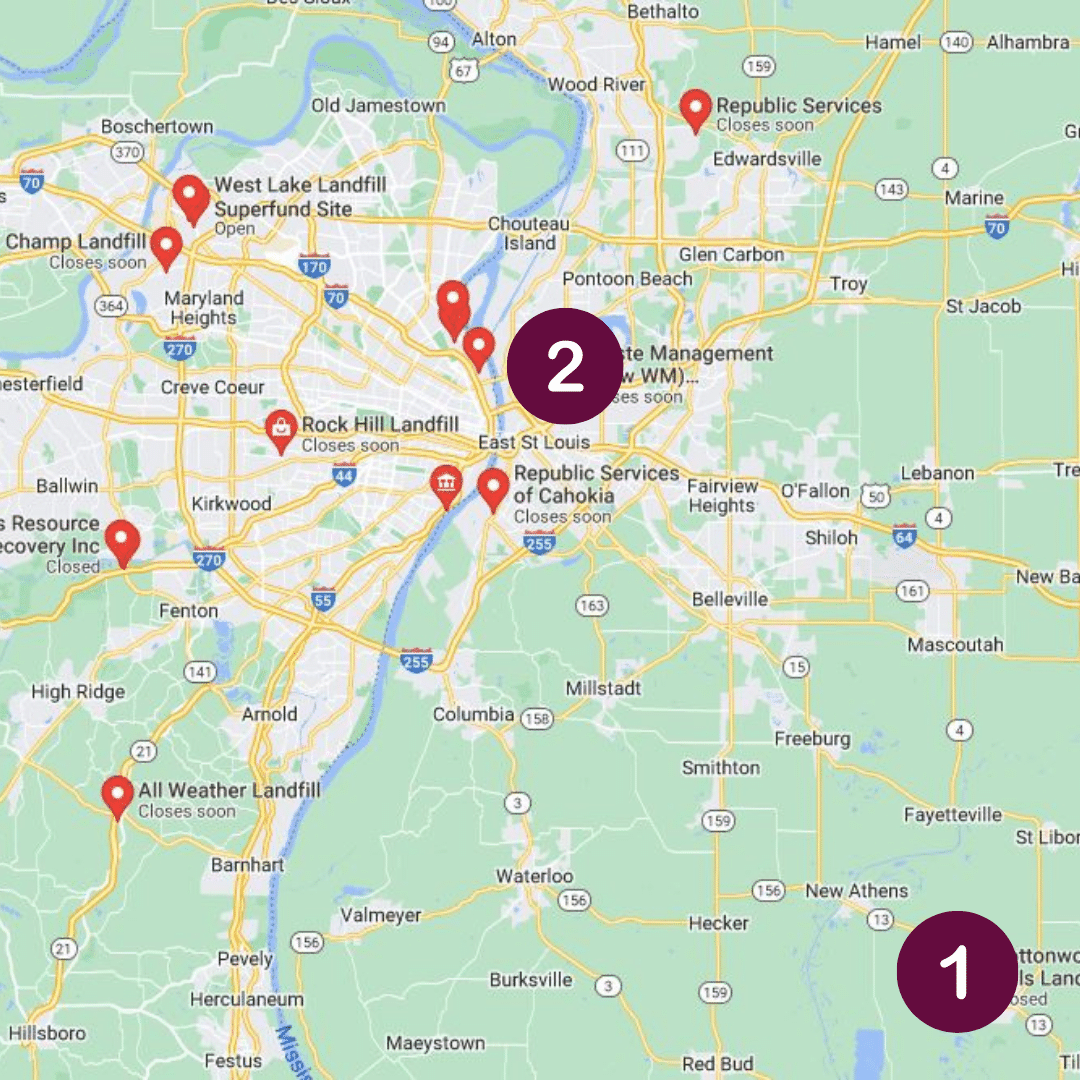
(** Any “closing” or “closing soon” mentioned on the map simply indicates hours of operation***)
The United States has over 3,000 active landfills and 10,000 closed landfills! The U.S. is the #1 trash-producing country in the world with over 1,600 pounds of trash generated per person, per year. This means that 5% of the world’s population generates 40% of the world’s waste!
The most pressing environmental concern regarding landfills is their release of methane gas. Methane is one of the most potent greenhouse gasses and a huge contributor to climate change. The creation of landfills typically means destroying natural habitats for wildlife. The average landfill size is 600 acres. With over 3,000 active landfills in the United States, over one million acres of habitat have been lost! 😩
Landfills also produce a liquid called leachate that contaminates nearby water sources, further damaging ecosystems. Leachate is high in ammonia and mercury. Leaking leachate creates “dead zones” where animals, plants and microorganisms cannot survive due to lack of oxygen. Homes near landfills are valued less and individuals living near landfills are more likely to have major health issues. Additionally, minority and low-income areas are more likely to find themselves close to landfills and hazardous waste sites. These communities have fewer resources to oppose the placement of new landfills and hazardous waste sites. Destiny Watford from Maryland experienced this first hand. With a lot of hard work she managed to gain enough support to prevent a trash incinerator from being built less than a mile from her school.
While landfills are a societal requirement to keep our communities clean, healthy and sanitary, they still pose a social and environmental threat. So, reusing materials is a great way to limit what goes into landfills. By limiting the amount of waste we send to landfills we then reduce the need for additional and larger landfills. Reusing also saves money in your own pocket by allowing you to avoid purchasing additional items in excess packaging that has to be thrown away.
What can we reuse?
We can reuse just about anything if we put our mind to it. From banana peels and coffee grounds to old jeans and used candles, anything can be reused for another purpose. Check out the list below for reuses of common items!
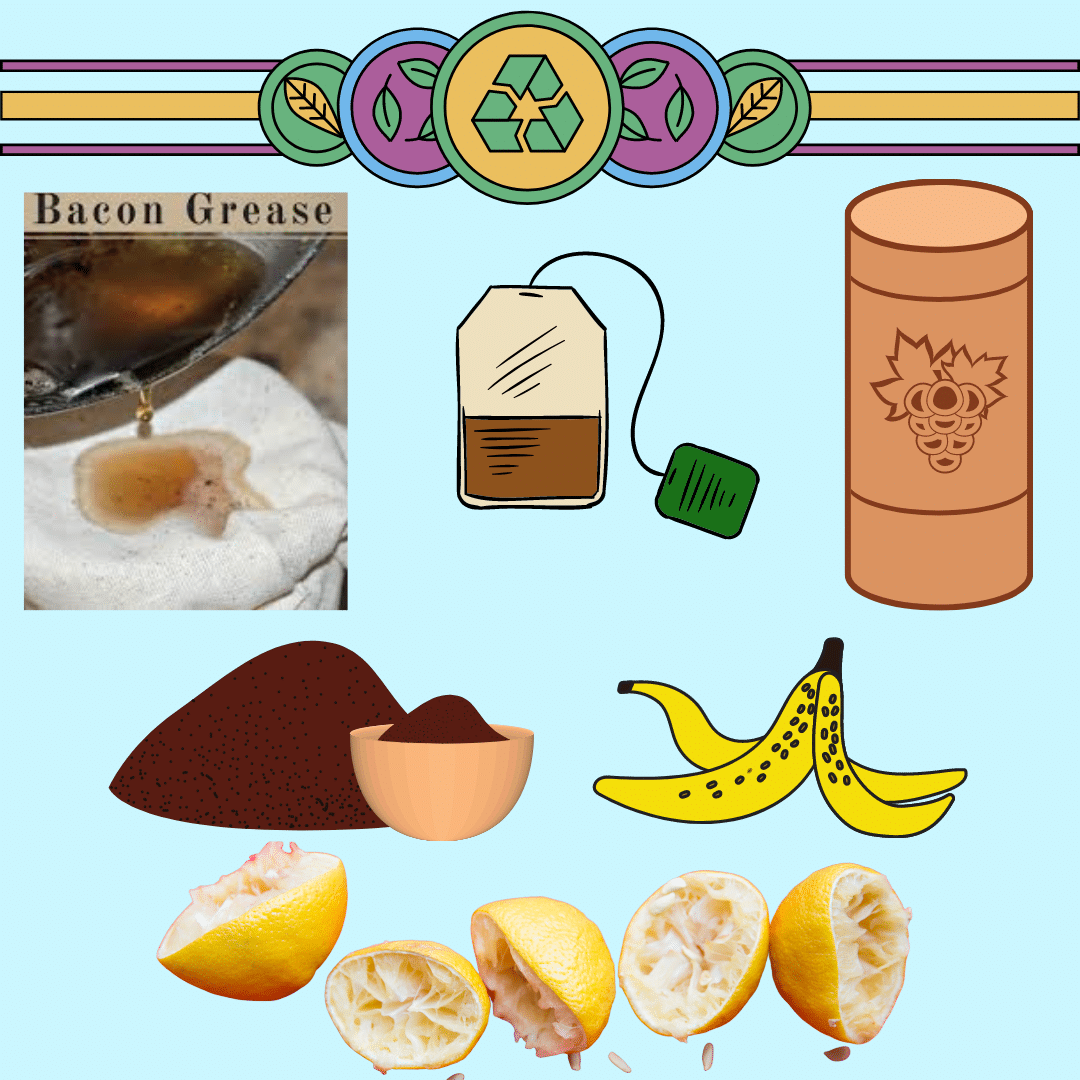
Foods
Food waste is not accepted in the Blue Bin or in the Green Waste bin. In 2018, over 145 million tons of municipal solid waste were landfilled. Food was the largest component, composing about 24%. Additionally, every year, each American throws out roughly 1,200 pounds of organic garbage that can be composted. You can read our blog post, “Why Compost”, to learn about the importance of composting and gain resources on how to compost! For some unconventional ways to reuse food waste and replace some commonly bought items, keep reading!
Wine corks: While empty glass wine bottles can be placed in the Blue Bin, wine corks cannot. This does not mean they have to waste away in the landfill! You can get crafty and make a key holder for your home, a cork board, or even some art! Visit here for 25 different wine cork crafts! Or you can donate them to Upcycle Treasure Box!
Bacon grease: We have all had that moment when we have enjoyed a nice meal and now it’s time to clean up! But what do we do with that dirty and used oil? We can actually put it in a random container, place it in the fridge, and once it is solid you can place it outside and feed the neighborhood birds! Visit here for some simple examples!
Coffee grounds: Don’t waste money on the extra baking soda! You can place used coffee grounds in the fridge to cover up any odors! Keep some used coffee grounds under the sink in a container to use with dish soap as a scouring agent for cleaning caked-on, stubborn food. Another use is to place a ring of used coffee grounds around garden plants to keep ants and slugs away.
Tea bags: Products to help reduce under eye bags can really rack up spending, but you can just use tea bags instead! Place used tea bags in the fridge so they can get cold, then use one on each eye to reduce any puffiness or redness! You can also place used tea bags on insect bites and minor burns; it’s said that the tannins help soothe and reduce inflammation.
Banana peels: Save money and time on a shoe shine and just use the leftover banana peel to shine your shoes! Rub the inside of the peel on shoes, then buff with a soft cloth.
Citrus: There are plenty of ways to use citrus to clean various parts of your home. Juiced citrus halves sprinkled with salt can be used to clean stainless steel and other metal fixtures.
Clothing
With a little creativity, there are a great deal of ways to reuse clothing! Of course, if the clothing items are in good condition, you can donate them, sell them online, or post them in your neighborhood Buy Nothing Group. If your clothing is too damaged to be donated, Remains Inc. accepts clothing and textile items that aren’t in great condition. Keep reading to see some more uncommon ways to reuse clothing!
T-Shirt: These can certainly be cut up and turned into dish and cleaning rags! They can also be cut into strips and used as yarn to knit with!
Jeans: There are so many different ways to reuse jeans we simply cannot fit them all in this blog post! From quilts to coffee cup holders, click here to explore 15 ways to reuse jeans!
Knit Sweaters: You can simply unravel the yarn and knit something new! If knitting is not your thing, you could still unravel the old sweater and gift the yarn to someone else!
Containers
While you can recycle empty plastic bottles and containers in the Blue Bin, not all plastics can be recycled. Plastic bags and wrap cannot be recycled in the Blue Bin, so here are some ways to reuse these items rather than recycling them Beyond the Blue Bin or throwing them in the trash.
Old newspaper sleeves: Place some in your purse or backpack for use as emergency rain boots! Or if you don’t like the feeling of rubber gloves use these sleeve bags over your hands while you do the dishes!
Styrofoam cups and containers: Don’t worry about buying packing materials when you ship that gift to a special someone. These cups and containers can be cleaned, torn up and used as packing peanuts.
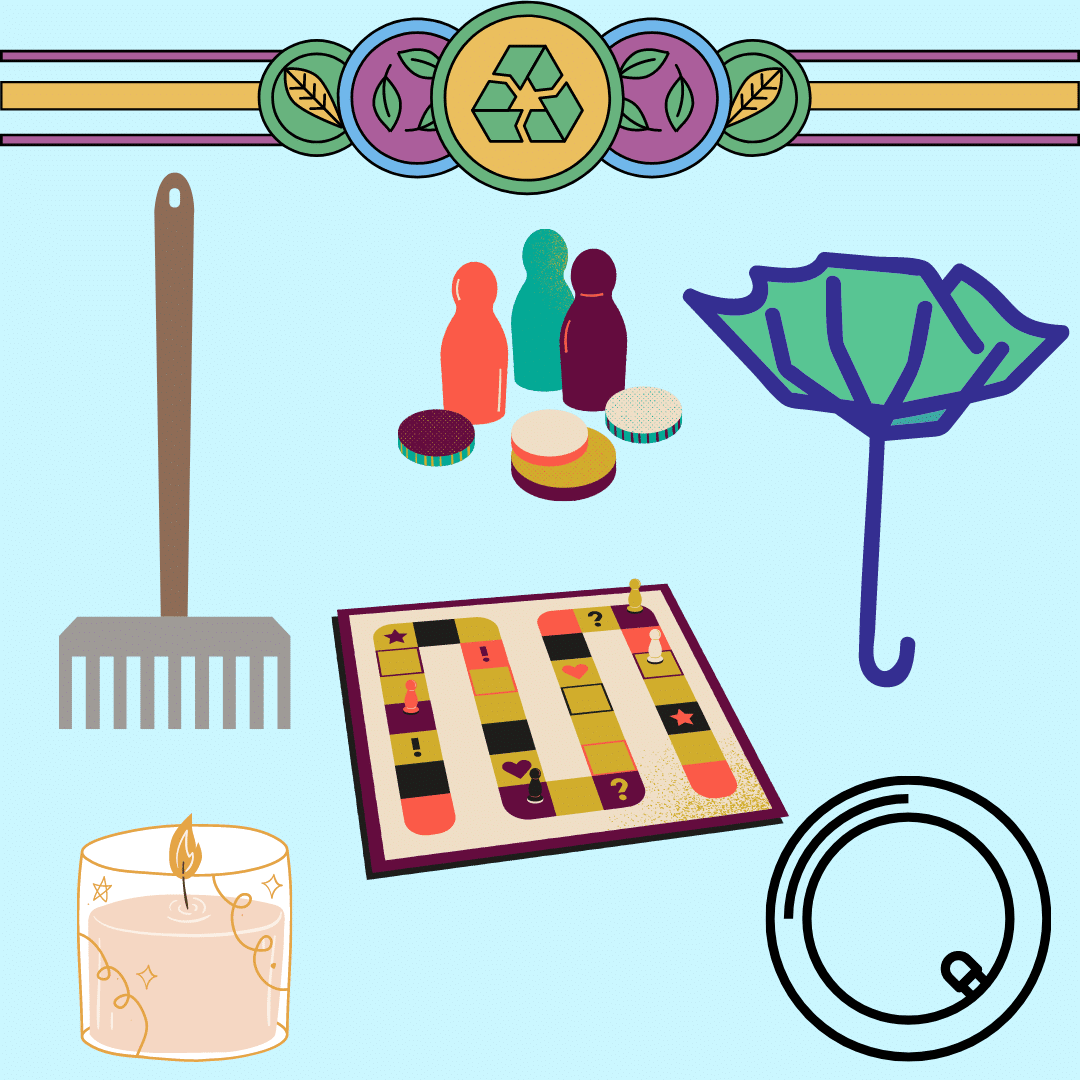
Other Household Items:
Old Games: Use the game board to make some fun coasters! You can also use old board game pieces to make jewelry or decorate wrapped gifts!
Broken Umbrellas: Save the cloth to make some purses, skirts, or even a doggie raincoat!
Old Garden Rake: Remove the head and hang it on the wall to use as a necklace tree, a rustic tie holder, a scarf organizer or a belt holder.
Candle Jars: Glass candle jars are treated with chemicals that allow them to withstand heat which also prevents them being recyclable in the Blue Bin. However, you can easily clean out the wax to create some fun new storage containers! They can hold pens, jewelry, sewing materials, sugar, flour – just about anything!
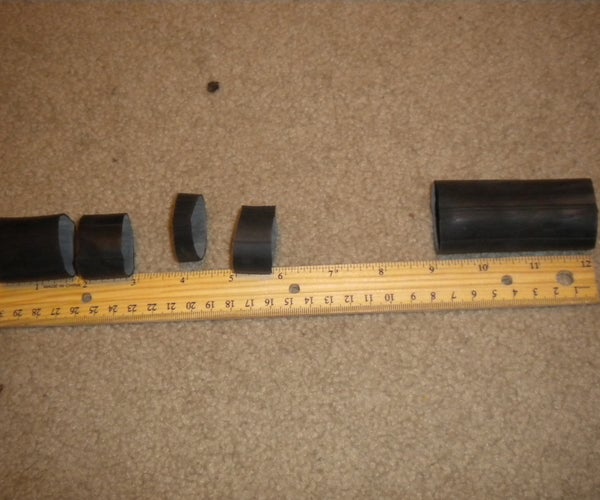
Bike Inner Tubes: Rubber, leather and textiles comprised over 11% of total waste landfilled in 2018. Let’s try to reuse the popped rubber tubes from our bikes! You can cut the tube for custom sized rubber bands! You can also use the tube as a door draft stopper.

To the non-recycler, an empty bottle is garbage. To the reuse enthusiast, that empty bottle could be a chandelier, vase or even a drinking glass! If you can’t find a way to reuse something, maybe someone else can! Search for your local Buy Nothing Facebook group and donate to shelters or thrift stores. Our database is full of resources where you can recycle beyond the Blue Bin and give other people an option to reuse. Even those clothes full of holes you are too tired to make something out of can be donated to Remains Inc.! Everything can have a second, third, or fourth life if we put some extra thought into it. All your hard work and creativity prevents extra materials from being sent to overflowing landfills and saves money!
Additional Resources:
EPA Facts and Figures on Materials, Wastes and Recycling





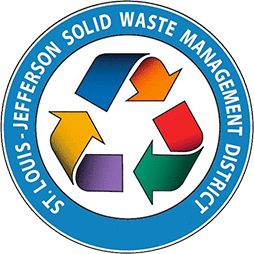



2 Comments
Full of great ideas I had never heard before! We could all use less and reuse a little more. Keep up the great work!
Thank you so much! We are ecstatic to share these ideas and encourage reusing!